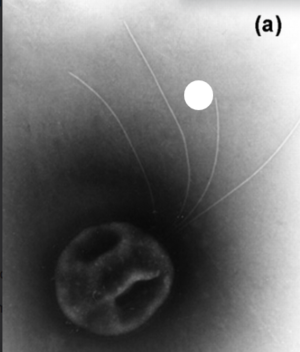Acidilobus saccharovorans
Classification
Thermoproteota; Thermoprotei; Acidilobales; Acidilobaceae
Species
|
NCBI: [1] |
Genus species
Acidilobus saccharovorans
Description and Significance
Describe the appearance, habitat, etc. of the organism, and why you think it is important.
A. saccharovorans has a coccus shape with a bundle of flagella. This archaea also has a thick S-layer. A. saccharovorans was isolated from a terrestrial hot spring.
Genome Structure
Describe the size and content of the genome. How many chromosomes? Circular or linear? Other interesting features? What is known about its sequence?
A. saccharovorans consists of a circular genome with 1,496,453 base pairs. A. saccharovorans have no extrachromosomal elements and have one copy of the 16S-23S rRNA operon. There are 246 genes that are unique for A. saccharovorans.
Cell Structure, Metabolism and Life Cycle
Interesting features of cell structure; how it gains energy; what important molecules it produces.
Acidilobus saccharovorans is an anaerobic, organotrophic, thermoacidophilic archaeon. Glucose in A. saccharovorans is metabolized to pyruvate through the Embden-Meyerhof pathway or the Enter-Doudiroff pathway. A. saccharovorans may conserve energy by doing oxidative phosphorylation.
Ecology and Pathogenesis
Habitat; symbiosis; biogeochemical significance; contributions to environment.
If relevant, how does this organism cause disease? Human, animal, plant hosts? Virulence factors, as well as patient symptoms.
A. saccharovorans are found on hot springs. They are believed to help with the complex oxidation of organic material.
References
Author
Page authored by Leah Rotte, student of Prof. Bradley Tolar at UNC Wilmington.

